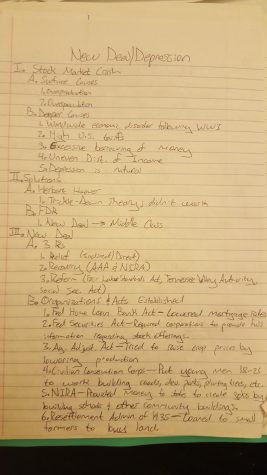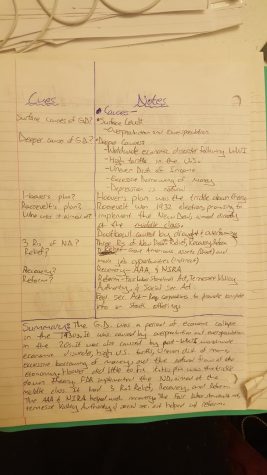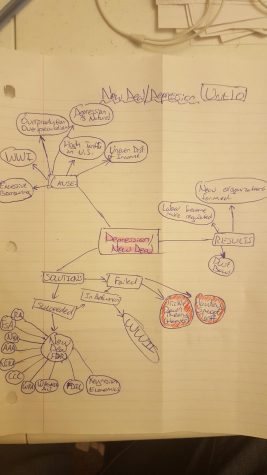Getting the Point: Note-Taking Methods
Taking notes the same old way can get boring really fast. In the end, the purpose of taking notes is to get information from one’s head to one’s paper as quickly as possible. There are several, more interesting, note-taking methods one can use that will accelerate learning.
I. Outline—
The outline method is the most basic note-taking method. Label the main points and move inward at each point as it gets more detailed (see example). Typically one would label the main points “I, II, III . . .” the second points “A, B, C . . .” and the third level “1, 2, 3 . . .” This note-taking system is unlimited in terms of the amount of detail that is possible. It is also very simple and easy to learn.

II. Cornell—
The Cornell note-taking system is a little bit more complicated than the outline method but much more effective for studying later. With this system, note-taking is essentially the process of compiling an original study guide. To take Cornell notes divide the page into two columns, leaving about ¼ of the page at the bottom undivided (see example). Label the top of the left column “Questions” and the top of the right column “Notes.” Label the bottom box “Summary.”
With this method, you take notes as you normally do, but as soon as possible, after the lecture, add questions to the left box for the main points of the notes. Write a summary of each page in the bottom box. The nice thing about Cornell notes is that one can use any note-taking method in the notes column, easily combining different note-taking methods.

III. Mindmap—
A mindmap is a representation of ideas and their relationships to one another. It is the most visual of the three note-taking methods mentioned in this article. It is most effective for brainstorming but can be used for more technical subjects with some creativity. Mindmaps are useful for synthesizing a large amount of information into a cohesive whole. It is an extremely effective method for reviewing notes. It is most useful for making connections between a lot of different ideas. It is helpful for developing an understanding of the material, not just memorizing the information.

Having a systematized method of taking notes will lead to a deeper understanding of whatever it is one is studying. It will foster better organizational skills and ultimately improve one’s in-class performance.





